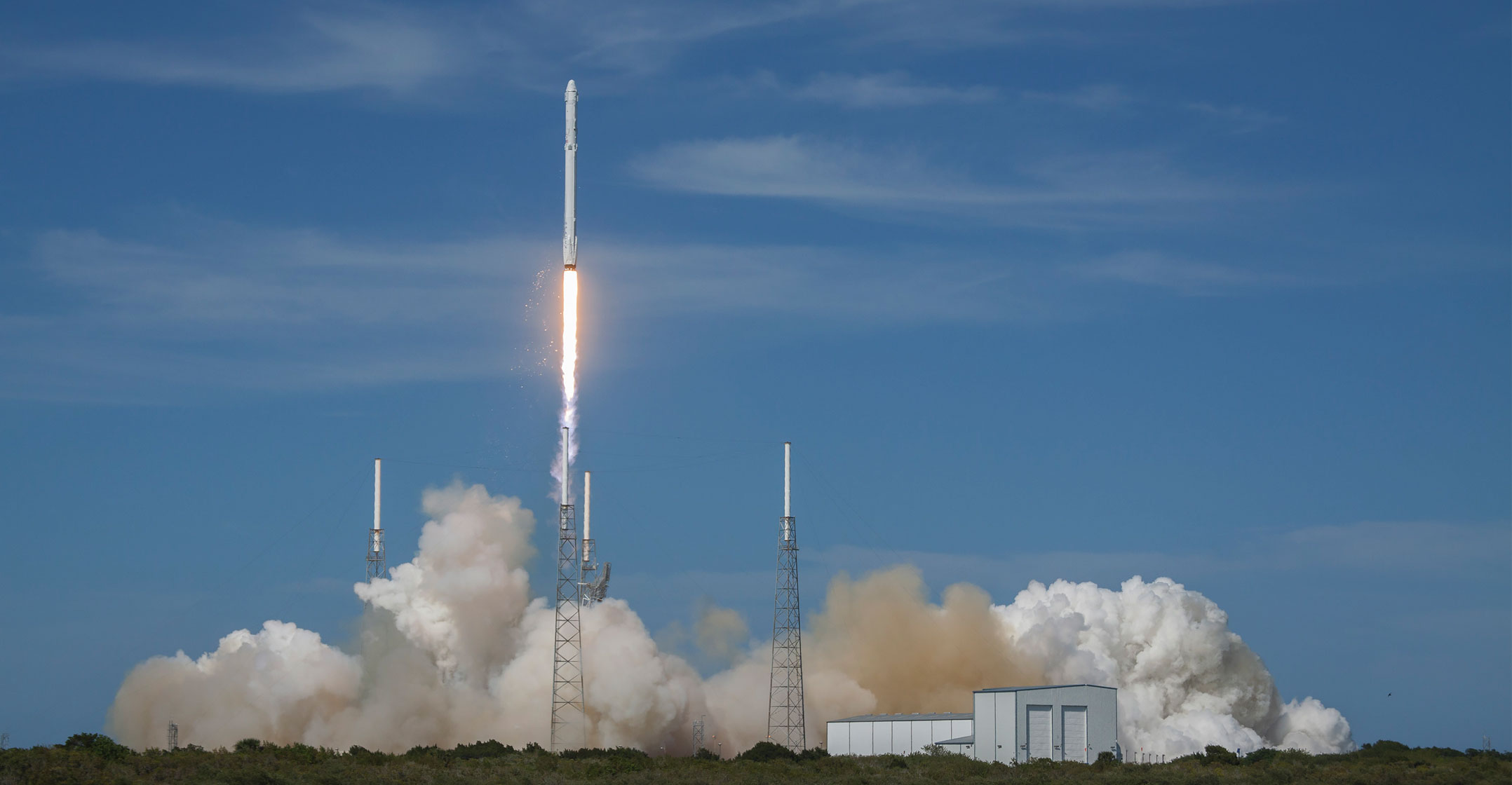
SpaceX has launched its heftiest rocket with 24 research satellites. The rocket is also carrying a deep-space atomic clock, a solar sail, clean and green fuel, and even human ashes.
The Falcon Heavy rocket blasted off from Nasa’s Kennedy Space Centre in Florida. It was the third flight of a Falcon Heavy, but the first ordered by the military.
The US defence department mission is expected to provide data to certify the Falcon Heavy — and reused boosters — for future national security launches. It was the military’s first ride on a recycled rocket.
Both side boosters landed back at Cape Canaveral several minutes after lift-off, just as they did after launching in April. But the new core booster missed an ocean platform. SpaceX said this was not unexpected for the especially difficult mission.
Nasa signed up for a spot on the rocket, along with the National Oceanic and Atmospheric Administration (NOAA), the Air Force Research Laboratory, the Planetary Society and Celestis, which offers memorial flights into space.
An astronaut who flew on Nasa’s first space station in the 1970s, Skylab’s Bill Pogue, had a bit of his ashes on board, along with more than 150 other deceased people. Pogue died in 2014.
Challenging
SpaceX said the mission was one of its most challenging launches. The satellites need to be placed in three different orbits, requiring multiple upper-stage engine firings. It was going to take several hours to release them all.
The Deep Space Atomic Clock by Nasa’s Jet Propulsion Laboratory is a technology demo aimed at self-flying spacecraft.
The clock is meant to help spacecraft navigate by themselves when far from Earth. Nasa was also testing a clean and green alternative to toxic rocket and satellite fuel.
Watch the launch:
The Planetary Society’s LightSail crowd-funded spacecraft will attempt to become the first orbiting spacecraft to be propelled solely by sunlight.
It is the society’s third crack at solar sailing. The first was lost in a Russian rocket failure in 2005, while the second had a successful test flight in 2015.
The Air Force Research Laboratory had space weather experiments aboard, while the NOAA had six small atmospheric experimental satellites for weather forecasting.




